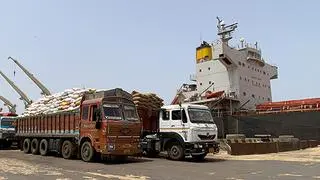In the article ‘Railways needs to focus on non-bulk freight’ (BusinessLine, June 14), we had argued that in an expanding economy, freight earnings would continue to be the bread and butter of the Indian Railways (IR) and that its passenger segment cannot continue to be subsidised endlessly.
The Railways has been in a rut in respect of passenger business, with no long-term plan, particularly in the last decade. It needs a new business model to reinvent itself through higher service efficiency and profitability. An attempt was made in 2019, guided by NITI Aayog, to introduce private passenger train services but it failed as the bid documents were one-sided with prospective operators having to contend with high financial investment, acute risks and tough contractual conditions.
The Railways’ efforts to introduce its own and private semi-high-speed trains have met with little success so far.
The passenger segment has to contend with the following: transformational services like metros, regional rail transport, planned high-speed services, frills-free airlines and improving highways. Although efforts have been initiated to segregate rail infrastructure for passenger and freight business, such a change calls upon the Railway management to draw a 15-year plan to rebuild passenger services using technology and customer-centric upgrades, including that in public-private partnership mode, wherever beneficial.
The Japanese experiment
Let us examine some international benchmarks of passenger focus. The Japanese model comes close to the Indian situation of high density of population. Japanese Rail was a government entity till 1987 and was later reorganised, first through corporatising and later privatising. The passenger operation was hived off among companies with the division of operation based largely on region with only some long-distance operations extending beyond the respective regions.
The ownership was initially retained by the government and privatisation of some of these companies began only after five years in the early 1990s. Today, Japanese Rail is reorganised under six passenger companies, with tracks leased out to operators — 60 per cent to these six companies, 15 per cent to HSR Shinkansen, and 25 per cent to private companies operating services with local governments.
The government has shown commitment in reorganising 49 ordnance factories into seven companies as profit centres, with specific range of products assigned to them. The time has come for the Railways to be reset as a regulatory body and all passenger services transferred to new companies for regional operations, and one freight company for national operations.
The Railway Board can be refashioned as a construction, transport and technology agency for supervising these autonomous companies and other technical bodies but only at the policy level with no day-to-day responsibilities.
This would facilitate drawing up a long-term plan to rebuild passenger services profitably, considering high and semi high-speed services, with clear objectives to reduce travel time by at least 30 per cent and inducting energy-efficient rolling stock to bring down operating cost. With Dedicated Freight Corridors (DFCs) of 3,300 km, upgradation to 160 km of tracks parallel to DFCs and introduction of Vande Bharat trains, a new look passenger business segment that is faster, efficient and profitable can be in place in a matter of years.
Autonomous entities
All upgraded semi-high-speed and future high-speed tracks can be clubbed and leased to two autonomous outfits, one for north-western HSR and Rajdhani/Shatabdi routes of North Central, West Central and Western Railways and the other for the north-eastern region covering similar routes of Northern, North Central and Eastern Railway as new profit centres. The new entities should be empowered to take all commercial decisions.
Vande Bharat trains, including its future upgrades, may be operated by these companies replacing intercity Shatabdi and Rajdhani trains, ensuring a paradigm shift in customer experience but with profitability. These companies can be authorised to realise hire charges from other entities which would use the track.
All remaining non-semi-high-speed tracks can be leased to existing administrative units to operate other passenger trains and suburban services in the regions covered by these companies. Given that these routes may not be remunerative as the tariff for the lower-end travellers cannot be detached from political considerations, the profits/losses in services can be directly subsidised by the Central and respective State governments, after making the States serve as partners. These units can also be autonomous entities of the Railway Board, except financially reporting for subsidies.
Other essential organisations of the Railways not connected with operations directly, like Research Designs & Standards Organisation, National Academy of Indian Railways and other training institutes, can be kept under Railway Board.
As for the eight production units of the Railways, they can be separated from the latter and merged to form a Railway Rolling Stock Company on the lines of the reforms done for ordnance factories. Along with these reforms, railway freight services would also need to be addressed and a beginning can be made by forming a separate company to operate the freight corridors.
Based on the experience and hopefully success of such a model, similar reforms can be replicated to other areas of the Railways for both passenger and freight traffic.
Shukla is a former Director, Dedicated Freight Corridor Corporation of India Ltd, and Mani is a Retd. General Manager, Indian Railways








Comments
Comments have to be in English, and in full sentences. They cannot be abusive or personal. Please abide by our community guidelines for posting your comments.
We have migrated to a new commenting platform. If you are already a registered user of TheHindu Businessline and logged in, you may continue to engage with our articles. If you do not have an account please register and login to post comments. Users can access their older comments by logging into their accounts on Vuukle.